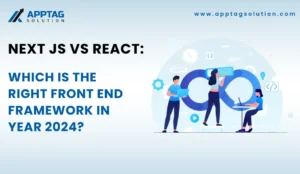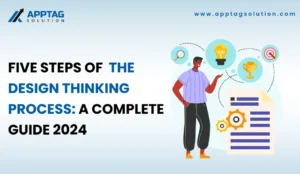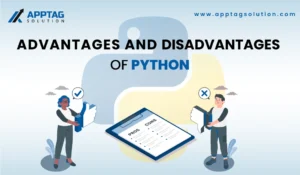Businesses as well as brands across the world are required to take into consideration many different things during the creation as well as the updating of the websites. Whether you are running your e-commerce website or web development business, you would like to attract as many numbers of the audience to your website as possible.
This means ensuring that many people visit your website through the prioritization of the site’s accessibility. Businesses while making their websites need to pick up the right design, ensure a call-to-action manner in the right manner, and that everything is working on mobile & of course, it entails good practice of search engine optimization. However, there is another crucial part of this that is quite often overlooked and it is the website accessibility process.
Web accessibility is all about ensuring that everyone can utilize the site, even when the individual has a disability. So, there is accessibility along with other compliance needs that have already come into the spotlight over the past few years. This is primarily owing to the increase in lawsuits along with other legal trends. So if any business has having website, then it is the best time to ensure that it is fully compliant with all the needed accessibility standards.
Not sure what to do? From where to begin? if yes, here is a guide for you that will cover everything that is required to know what is website accessibility, and its importance.
Let’s get started with a few of the common questions that you might be having in your mind along with a comprehensive guide on designing highly accessible web pages:
What is website accessibility?
Are you thinking about what is the accessibility of a website? Website accessibility is all about ensuring that the site is usable for everyone. This also the people having a disability as well as impairments. So, there are several resources, tools as well as techniques, and also tips businesses & brands can leverage for the creation of an all-inclusive website making the process much easier than ever before.
Common web accessibility examples
Web accessibility will ensure that all the content as well as the services are available to individuals having disability. And this pertains to anything that the individual not having a disability can perform on the website and a person with the disability should also be ideally able to do so. You might be thinking about what kind of disabilities are included. This is something that is varying and will include auditory, visual & cognitive disabilities.
Some of the common web accessibility examples covered under disabilities are mentioned below:
Auditory disabilities
This is when the visitor of the website is not able to hear and they are not able to differentiate between different sounds. This is something that can be quite problematic while running the videos, podcasts, or incorporation of the other elements within the website.
Visual disabilities
This type of disability will need the utilization of the screen reader for reading any text on the website. There can be various other visual issues that can make it quite difficult for the individual to read the text. For example; when the contrast is low or they are having difficulties perceiving the colors that are displayed on the website.
Physical as well as neurological disabilities
The physical, as well as neurological disabilities, make it harder to understand the complicated language or the instructions that are present on the website. And this also means that individuals will be requiring extra time to complete some of the steps. And thus there is a need for timers as well as similar problematic components.
You should keep this thing in mind that disability can be classified into many different categories. Sometimes it is temporary while at other times, it is permanent. The issue can also be the consequence of the aging process and comes gradually. Other types of disability problems arise under some specific conditions for example the bright lights.
Who is managing and enforcing website accessibility regulations & laws?
Now you have understood what is web accessibility, the next question that comes to mind is who is managing and regulating web accessibility regulations and laws. The responsibility for the management and enforcement of the regulations as well as the laws is shared by many governmental as well as non-governmental authorities. Each organization plays a crucial role in the management and enforcement of website accessibility in the maintenance of accessibility standards.
Governmental Agencies
In the country like the United States, the DOJ, and Department of Justice is mainly responsible for the enforcement of the ADA. This regulation pertains to the rules about website accessibility. At the same time, there are many other nations which are having their governmental bodies which are overseeing the similar of the legalities and regulations involved.
International Standard Organizations
The World Wide Web Consortium, W3C already came forward with the web content accessibility guidelines. This is a set of internationally recognized standards that outline web accessibility and how to make a site more and more accessible to individuals with disabilities. These guidelines can be described in the form of the benchmark for achieving web accessibility and comes under legal norms.
Advocacy groups as well as non-governmental organizations
The nonprofit organizations along with the advocacy groups are quite often responsible for the promotion of site accessibility by providing distinct resources. Also conducting the auditing and sometimes pushing for legal action against the non-compliant sites.
it is very crucial to take note here that the web accessibility landscape is evolving at a constant rate. Every individual in society has a shared responsibility for staying updated with the latest news, legal developments, and other transformations that are impacting website administrators.
Website accessibility standards- what are these?
According to the WCAG, there are four main principles that you are required to adhere to for the creation of an accessible website. So the criteria for your site to have the website accessibility standards include:
-
Perceivable
The visitors must be capable of perceiving or even understanding and being aware of the content as well as the information on your website. for example, gaining access to alt text.
-
Operable feature
The visitors must be capable of using every component of the website without any disruption. And this entails that there should be well well-mapped and organized navigation menu for attaining this.
-
Understandable
Whatever the content is there on your website, whether it is written or otherwise presented should be convenient to understand. There should be clear, concise language as well as uncluttered pages which can be utilized for communicating information.
-
Robustness
The underpinnings of the website, for example, the HTML code is something that should be read conveniently while at the same time interpreted by the visitors. This includes the assistive technology for the screen readers. Among one of the web accessibility examples is the optimization of the site for distinct devices for example; mobile phones and tablets.
Common website accessibility examples for online barriers
Some of the common barriers that prevent users with the disability from gaining access or interacting with the website include:
Lacking alt text for images
When the image on the website does not have an alternative text, the screen readers utilized by the visually impaired users are not able to interpret what is the image all about. This will be actually causing the lack of the understanding/ or missing out of the most crucial information.
Inadequacy in keyboard navigation
There are many users who are having the motor disabilities and they are relying on the keyword navigation & not on the mouse. The websites that are not supporting the keyboard navigation or having the complex layout are actually proved to be inaccessible to all such users.
Poor color contrast
There can be insufficient of the contrast which is taking place between the text as well as the background colors. So, this will be making it quiet hard for reading the content by the users having visual impairments which is including the color blindness. This can actually render the text practically invisible for some of the users.
Non descriptive link text
Through the utilization of the vague phrases for example the click here as well as the link text do not provide enough of information about the destination of the link. This is specifically for the screen reader users who might be browsing the link out of context.
Lack of caption/ transcription for audio & video content
The users who are having the disability of deafness or find a difficult to hear are actually relying upon the captions/ transcripts for both the audio as well as video content. Without this tool, they will be missing the most crucial information.
Using jargon or complex language
The overly complex language/ industry jargon can prove to be quite a significant barrier for all the users who have cognitive disabilities or the ones who are not native speakers of the language on the website.
How to achieve website accessibility- A comprehensive guide
Now the next part of the blog is to guide you on designing as well as building the website for letting everyone use and navigate with immense ease. You have to start your journey of web accessibility in an exciting manner. Here are the steps and guidelines below that you have to go through while designing your all-inclusive website and ensuring that it is meeting the legal as well as the technical standards in terms of accessibility for everyone, specifically individuals with disability.
Ensuring the website facilitates keyboard navigation for web accessibility
The keyboard navigation is one of the cornerstones of any web accessibility feature. There are several users, especially the ones with motor disabilities and they are relying upon the keyboard and not the mouse for navigating the websites. So make sure that your website supports the keyboard navigation.
Make content convenient to see as well as hear to achieve web accessibility
You need to ensure that the content on the website is convenient to see as well as hear. And this is quite vital for making your website accessible to all users having visual and auditory impairments. This includes people who are visually challenged, have low vision, color blindness, or find it difficult to hear.
Provide text alternatives for website accessibility
The text alternatives will also make the non-text content on the website much more accessible to individuals having visual and auditory disabilities. Such alternatives will provide the textual equivalent of information that is conveyed via images, videos as well as audio files. This also ensures that all the users, including the ones serving as screen readers or using other assistive technologies, will gain access to similar information.
Organize & structure your content in an adaptable manner
Make sure to organize as well as structure the content in an adaptable way. This is going to ensure that all the users are accessing the site, while at the same time receiving the information in a coherent as well as logical manner.
Conclusion- Achieve website accessibility & make it convenient for everyone to use
The continuous improvement in web accessibility is one of the core reasons for you to celebrate. if you want your website to reach as many people as possible, including disability, then you should design it in a manner that it is accessible. Hope this blog provides you with the right information about what is accessibility. As we have discussed all the strategies that you can achieve to design a website so that all the visitors can navigate and utilize it. similarly, if you are finding UI UX designing service then click here best UI/UX designing company.
Hire our company App Tag Solutions for achieving website accessibility
Our Company, App Tag Solutions, by embracing and integrating web accessibility features into the site designing and development process, will make it reach more and more people including individuals with a disability. Our expert website designers will help you to champion accessibility in the digital landscape, for practicing the highest standards of diversity and inclusiveness.
Frequently Asked Questions(FAQs)
-
Do I require web design accessibility in order to make my website accessible to everyone?
Not specifically! The accessible web design is one of the parts of web accessibility. It is just a part of the story. So quite often the web developers create additional functionality into the most accessible web design features, assisting the various groups of users to overcome their conditions and challenges to navigate and use the website.
-
What colors are best for achieving web accessibility for my page design?
The contrast between the colors/ backgrounds is more crucial than what type of color your website has. At the same time, the color is not the only feature for conveying information. Try avoiding the utilization of flashy elements along with the saturated reds.
-
Does web accessibility imply more than just the website’s look?
Definitely yes! The accessible web design will involve more than the simple consideration of the visual element incorporation into the website. The web designer will be considering the functional requirements of the user with an array of disabilities. After that, they will be implementing the methods as well as the various digital tools while working to meet those unique requirements.




